The Aberdeen Terrier, commonly recognized for its intelligence and family-friendly disposition, is a breed that has garnered significant attention across the globe. With distinct dimensions and general characteristics, it has become particularly popular in certain regions. Known for its versatility and charm, it often finds its place in the hearts of dog enthusiasts everywhere.
Aberdeen Terrier Breed – Quick Facts
| Feature | Description |
|---|---|
| Size | Small; Height range: 10-12 inches (25-30 cm) |
| Weight Range | 18-22 pounds (8-10 kg); Slight variations between males and females |
| Predominant Colors | Black, brown, brindle |
| Fur Length and Type | Short; Straight |
| Lifespan | 12-15 years |
| Activity Level | Moderate |
| Intelligence Level | High |
| Ease of Training | Average |
| Good with Kids | Yes, with supervision |
| Training Requirements | Standard |
| Known Health Issues | Minor skin issues, hip dysplasia, dental concerns |
Physical Characteristics of the Aberdeen Terrier
The Aberdeen Terrier boasts a compact and muscular build. Standing at a height ranging from 10 to 12 inches, males often slightly outweigh their female counterparts, but the difference is minimal.
This breed’s coat is short and straight, making it relatively low-maintenance. Recognized coat colors predominantly include shades of black, brown, and occasionally brindle.
One of the defining characteristics of the Aberdeen Terrier is its head. The muzzle is of medium length, complemented by a sturdy jawline. Their ears are typically erect, adding to their alert appearance.
Eyes of the Aberdeen Terrier are often dark, exuding an expression of curiosity and intelligence. While there aren’t any unusual markings specific to this breed, some may exhibit distinct spot patterns or color gradients on their fur.
When observing an Aberdeen Terrier in motion, one can’t help but notice its confident gait. Their movements are brisk and energetic, a testament to their agile nature.
The standard posture of an Aberdeen Terrier is upright with a slight forward lean, always ready to spring into action.
Aberdeen Terrier Temperament & Personality
When it comes to temperament, the Aberdeen Terrier is known for its balanced nature. Neither too hyperactive nor overly docile, this breed strikes a perfect middle ground. It carries an innate curiosity about its surroundings but remains composed most of the time.
Interactions with people are generally positive. Aberdeen Terriers are friendly, but they maintain a degree of independence.
They tend to get along well with other dogs and animals, but early socialization is always beneficial to avoid any aloof tendencies. This breed doesn’t shy away from newcomers but does exhibit a certain level of caution before warming up.
Training an Aberdeen Terrier is a rewarding experience, primarily because of its high learning capability. They tend to be focused during training sessions, absorbing new tricks and commands efficiently. However, their intelligence also means they can be a tad stubborn if they sense inconsistency in training methods.
A moderately energetic breed, the Aberdeen Terrier requires regular exercise to maintain its physical and mental well-being. A couple of short walks, combined with some playtime, usually suffices.
Adaptable in nature, they fit well into various living situations. In family settings, the Aberdeen Terrier bonds well with members, showing special affection for children.
However, supervision is advisable during playtime with younger kids.
As for other pets, with proper introductions, they usually integrate seamlessly into a multi-pet household.
What Does The Ideal Home For an Aberdeen Terrier Look Like?
An ideal home for an Aberdeen Terrier combines space with safety. A residence with a medium-sized backyard is preferable, allowing the terrier room to roam, play, and exercise. However, secure fencing is a must to prevent any adventurous escapades or potential encounters with wildlife.
The breed’s adaptable nature allows it to fit seamlessly into various family structures. From single individuals to bustling households with children, the Aberdeen Terrier generally makes a harmonious fit.
For families with elderly members or very young children, it’s essential to ensure that interactions are always supervised, ensuring safety for both the dog and the family members.
Given their moderate energy levels, having spaces where the Aberdeen Terrier can burn off some steam is beneficial. Access to off-leash areas, parks, or even a garden where they can indulge in some digging can be a significant advantage.
For their well-being, proximity to essential resources is crucial. Easy access to veterinary care, training facilities, and dog-friendly parks can make a world of difference in their health and happiness.
While the Aberdeen Terrier isn’t overly sensitive to temperature variations, it’s vital to ensure they have a sheltered space during extreme weather conditions. They appreciate a comfortable and quiet environment to retreat to after a day of activity.
Can Aberdeen Terriers be left alone?
Aberdeen Terriers possess a moderate capacity for solitude. While they cherish their bonding time with family members, they can manage short periods alone without much distress.
However, longer durations of solitude can lead to feelings of neglect or boredom. In some cases, this can manifest in forms of separation anxiety or even mild destructive behaviors.
To ensure their well-being during times of absence, it’s advisable to provide them with toys or puzzles that can keep their minds engaged. Activities that stimulate their mental faculties can help in curbing potential feelings of loneliness.
While they aren’t typically prone to severe separation anxiety, regular social interaction and bonding time are crucial for their emotional health. It’s best to gradually acclimate them to solitude rather than enforcing prolonged isolation abruptly.
Ideal Owner for an Aberdeen Terrier
The Aberdeen Terrier, with its balanced temperament and moderate needs, is a suitable companion for a wide range of potential owners. However, there are a few characteristics that can ensure the best fit.
Experience in dog handling can be beneficial, though it’s not a strict requirement. The breed’s intelligence and occasional stubbornness might present minor challenges for a first-time dog owner. Yet, with patience and consistent training methods, even novices can form a rewarding bond with an Aberdeen Terrier.
The lifestyle of the potential owner should ideally match the Aberdeen Terrier’s energy levels. They aren’t suited for absolute couch potatoes but neither do they require an ultra-active individual. A middle-ground approach, with daily walks and regular play sessions, aligns perfectly with the breed’s requirements.
A commitment to training is crucial. While the Aberdeen Terrier is generally well-behaved, consistency in training is the key to nurturing desirable behaviors. Whether it’s basic commands, potty training, or more advanced skills, dedicating time and effort is essential.
Lastly, the ideal owner for an Aberdeen Terrier should be willing to invest time beyond just training. Bonding sessions, playtimes, and regular grooming are all part of the package when bringing this breed into one’s life.
Are Aberdeen Terriers good with kids?
Aberdeen Terriers, given their friendly disposition and moderate size, generally exhibit positive interactions with children. Their playful nature aligns well with kids’ energy levels, making them ideal playmates. However, there are some considerations to bear in mind.
Patience is a virtue of the Aberdeen Terrier. They tolerate the unpredictability of younger children, but like all dogs, they have limits. Ensuring that interactions remain gentle is crucial to preventing any accidental nips or aggressive reactions. Teaching children how to approach and handle the dog properly can go a long way in fostering a harmonious relationship.
The breed’s adaptable temperament means they often fit well in households with varying dynamics, including those bustling with kids. However, in particularly noisy or chaotic environments, it’s essential to provide the Aberdeen Terrier with a quiet space to retreat. This ensures that they can have some downtime and aren’t overwhelmed by constant stimuli.
Are Aberdeen Terriers aggressive?
Inherently, Aberdeen Terriers are not known for aggressive behavior. They possess a balanced temperament and are generally friendly towards familiar faces. However, like any breed, certain situations or triggers can provoke an aggressive response, though these instances are relatively rare for the Aberdeen Terrier.
One of the primary factors that might trigger aggression is the feeling of being threatened. An unfamiliar environment, a sudden loud noise, or an unknown individual approaching in a perceived threatening manner might cause the Aberdeen Terrier to react defensively.
Additionally, while they usually get along with other dogs, they can be territorial. This behavior can sometimes lead to confrontations with other animals, especially if they perceive them as intruders in their space.
Early socialization can help mitigate such tendencies. Exposing the Aberdeen Terrier to various environments, animals, and people from a young age can foster well-rounded social behaviors and reduce aggressive tendencies.
How Popular Is This Breed?
The Aberdeen Terrier, while not as ubiquitous as some breeds, has steadily gained recognition and popularity over the years. Originating from the UK, it has found its way into homes across the world, with a particular surge in interest in European countries.
In the USA, the Aberdeen Terrier’s popularity has seen a consistent rise. The breed’s intelligence, family-friendly nature, and manageable size make it a sought-after companion for both urban and suburban households. The American Kennel Club has noted a gradual increase in registrations for this breed, suggesting its upward trajectory in popularity.
Several factors contribute to this breed’s allure. Its rich history, stemming from its origins in Scotland, gives it a certain cultural cachet. Moreover, its versatility – being both a playful family companion and an alert watchdog – makes it attractive to a variety of potential dog owners.
Aberdeen Terrier Grooming
Attending to the grooming needs of the Aberdeen Terrier is relatively straightforward. Their short and straight coat requires minimal fuss, but certain routines can ensure their fur remains in optimal condition.
A weekly brushing is typically sufficient for the Aberdeen Terrier. This practice not only removes any loose fur but also stimulates the skin, promoting better coat health. When selecting brushes, a medium-bristle brush is recommended for effective grooming without causing discomfort to the dog.
In terms of washing, Aberdeen Terriers don’t require frequent baths. Unless they get into a particularly messy situation, a bath every couple of months should suffice. It’s essential to use dog-specific shampoos, ideally those catering to short-haired breeds, to ensure the coat retains its natural oils.
Professional grooming, while not a strict necessity for this breed, can be beneficial occasionally. An expert’s touch can help with nail trimming, ear cleaning, and ensuring the coat remains even and tidy.
Grooming an Aberdeen Terrier is usually a straightforward process, but owners should be vigilant about potential skin issues.
The breed can sometimes develop minor skin irritations, and regular grooming sessions provide an opportunity to spot and address any concerns early on. Moreover, during seasonal changes, their coat might require slightly more attention to manage shedding and maintain its luster.
Do Aberdeen Terriers shed?
Aberdeen Terriers have a shedding pattern that can be described as moderate. While they don’t shed excessively year-round, there might be periods, especially during seasonal transitions, where an increase in shedding is noticeable.
To manage this, regular brushing sessions are crucial. Not only do these sessions help in removing loose fur, but they also distribute the natural oils of the skin across the coat, keeping it healthy and shiny. Additionally, regular grooming reduces the amount of hair that might end up on furniture or clothing.
Aberdeen Terrier Diet: What Do They Eat?
The dietary needs of the Aberdeen Terrier are similar to other breeds of its size, but certain specifics should be considered to ensure optimal health.
At the foundation of their diet should be high-quality commercial dog food, whether it’s kibble, wet food, or a combination of both. The chosen food should provide a balanced mix of proteins, fats, and essential nutrients tailored for small breeds. Some Aberdeen Terriers might have sensitivities to certain ingredients, so it’s crucial to monitor for any adverse reactions, like skin irritations or digestive issues.
As the Aberdeen Terrier transitions from a puppy to an adult and eventually into its senior years, its dietary needs and preferences might evolve. Puppies often require more protein and frequent feedings, while seniors might benefit from a diet that supports joint health and digestion.
Treats are a valuable tool for training but should be given in moderation. Opt for healthy options that complement their primary diet. Always avoid giving them treats with high salt or artificial additives. It’s worth noting that certain human foods, such as chocolate, grapes, and onions, are toxic to dogs and should be strictly avoided.
Common dietary issues for Aberdeen Terriers include obesity and certain food intolerances. Regular weight checks and feeding measured portions can help prevent weight gain. If you suspect any food allergies or intolerances, consult with a veterinarian to tailor a suitable diet.
How to Feed an Aberdeen Terrier
Feeding an Aberdeen Terrier involves more than just providing them with food. It’s about creating a routine that ensures they receive adequate nutrition in a controlled manner.
Firstly, use a bowl of appropriate size for the Aberdeen Terrier. A medium-sized, shallow bowl typically works best. This not only ensures they can access their food easily but also promotes slower eating, aiding digestion.
It’s advisable to set specific meal times rather than leaving food out for the dog to graze on throughout the day. Establishing a consistent feeding schedule, with two meals a day for adults, can regulate their appetite and digestion. This routine also makes it easier to monitor their food intake, essential for weight management and observing any changes in eating habits.
Place the food bowl in a quiet corner, free from regular household foot traffic. This gives the Aberdeen Terrier a calm environment to eat without distractions or disturbances. After feeding, ensure they have a period of rest before engaging in vigorous activity to prevent potential stomach upset.
Lastly, always provide fresh water alongside their food. A separate water bowl should always be filled and accessible, ensuring they remain hydrated throughout the day.
How Much to Feed an Aberdeen Terrier
Determining the right amount of food for an Aberdeen Terrier involves considering various factors such as age, weight, activity level, and the type of food being provided.
For adult Aberdeen Terriers, a general guideline is to offer approximately 1 to 1.5 cups of high-quality dry dog food split across two meals daily. However, these measurements might vary based on the caloric content of the chosen food brand. It’s essential to consult the feeding recommendations on the dog food package and adjust accordingly.
Puppies, with their rapid growth and higher energy needs, often require more frequent feedings. Typically, three to four small meals a day is ideal for young Aberdeen Terriers. As they transition to adulthood, the number of feedings can be reduced, and portion sizes adjusted.
Activity level plays a significant role in determining food portions. An active Aberdeen Terrier that engages in daily play and exercise might require slightly more food compared to a more sedentary one. Conversely, older or less active dogs might need reduced portions to prevent weight gain.
Health Considerations
Like all breeds, the Aberdeen Terrier comes with its set of health considerations. Being informed about potential health issues and taking preventative measures can ensure a long, healthy life for these terriers.
Aberdeen Terriers are generally robust and healthy, but they can be predisposed to certain conditions. Hip dysplasia, a genetic condition where the hip joint doesn’t develop correctly, can sometimes be found in this breed. Regular vet checks and a balanced diet can help in managing and potentially preventing the condition’s progression.
Dental issues are another concern for Aberdeen Terriers. Regular dental check-ups, brushing, and dental chews can mitigate the risk of dental diseases.
Skin issues, while not prevalent, can occasionally occur in Aberdeen Terriers. Regular grooming and monitoring can help spot any abnormalities, irritations, or potential allergies early on.
The average lifespan of an Aberdeen Terrier ranges from 12 to 15 years. As they transition into their senior years, they might face typical age-related issues like arthritis or reduced vision. Regular vet visits, a comfortable living environment, and possibly a diet catering to senior dogs can support them through these golden years.
For preventative healthcare, keep up with a regular vaccination schedule. Protection against pests like fleas, ticks, and worms is essential. Regular vet check-ups, at least once a year, can help in early detection and management of any potential health issues.
How much exercise do Aberdeen Terriers need?
Aberdeen Terriers, being moderately energetic, require a consistent exercise regimen to maintain their health and channel their innate curiosity. Typically, 30 to 45 minutes of daily physical activity should suffice for most Aberdeen Terriers.
A combination of walks and play sessions is ideal. Daily walks allow them to explore and satisfy their curious nature, while playtime in a backyard or park can provide opportunities for them to sprint, fetch, and engage in interactive games. These activities not only cater to their physical needs but also offer mental stimulation.
While they have a sturdy build, it’s essential to be mindful of potential overexertion, especially during hotter months. During such times, early morning or evening walks, when the temperatures are cooler, are preferable.
Incorporating variety into their exercise routine can keep the Aberdeen Terrier engaged. Alternate between different routes for walks, introduce them to new toys, or occasionally involve them in agility courses if available in your area. Such activities can challenge their agility and intelligence, further enhancing their physical and mental well-being.
Though they are adaptable and can adjust to living in apartments, they’ll still need their daily dose of activity. Without regular exercise, Aberdeen Terriers might develop undesirable behaviors due to pent-up energy.
Aberdeen Terrier Training
Training an Aberdeen Terrier is a process that demands patience, consistency, and understanding of the breed’s specific traits. These terriers are intelligent and quick learners, but their independent streak might sometimes pose challenges.
Starting training early is advisable. As puppies, Aberdeen Terriers are more malleable and receptive to learning. The foundation of training should be built upon positive reinforcement. Rewards, praises, and treats can encourage desired behaviors and make the training process more effective.
Socialization plays a significant role in shaping the temperament of an Aberdeen Terrier. Exposing them to various environments, animals, and people from a young age can foster well-rounded behaviors and reduce tendencies of being overly cautious or aggressive towards unfamiliar stimuli.
Aberdeen Terriers might occasionally exhibit breed-specific behaviors like digging or chasing. While it’s essential to provide them with outlets for these instincts, training can help manage or mitigate these tendencies, ensuring they don’t turn into problematic behaviors.
Advanced training, such as agility courses, can be an excellent fit for the agile and intelligent Aberdeen Terrier. Not only does it challenge them physically, but it also stimulates their minds, ensuring they remain engaged and active.
Potty training and establishing house manners are integral parts of training. Consistency is key here. Establishing specific spots for them to relieve themselves and rewarding them for following the routine can lead to successful potty training.
Similarly, setting boundaries early on about areas they can or cannot access in the house can ensure a harmonious coexistence.
Are Aberdeen Terriers easy to train?
Generally speaking, Aberdeen Terriers exhibit a good level of trainability. Their inherent intelligence means they grasp new commands relatively quickly. However, like many terrier breeds, they possess an independent spirit, which can sometimes translate to stubbornness during training sessions.
This independent nature might require an owner to employ a bit more patience and consistency in training. The key is to make sessions engaging and positive. Using reward-based methods, like treats or praises, can make training more effective and create a positive association with learning new commands.
Another aspect to consider is the Aberdeen Terrier’s short attention span, especially during their younger years. Keeping training sessions brief but regular can help in retaining their interest and ensuring steady progress.
While they’re not the easiest breed to train, especially when compared to some more eager-to-please breeds, with the right approach, they’re far from the most challenging. New owners should be prepared for moments of independent behavior but should also take solace in the fact that once an Aberdeen Terrier is trained, they’re incredibly loyal and responsive to commands.
Are Aberdeen Terriers smart dogs?
Yes, Aberdeen Terriers are undoubtedly smart dogs. Their intelligence manifests in various ways, from their ability to pick up new commands to their problem-solving skills.
One of the hallmark traits of an Aberdeen Terrier’s cognitive capabilities is their aptitude for problem-solving. Whether it’s figuring out how to access a treat or navigating obstacles in their path, their keen minds are always at work. This intelligence, combined with their innate curiosity, often leads them to explore their surroundings and understand their environment better.
Their learning speed is commendable. When introduced to new tasks or commands, they often grasp them after just a few repetitions. This makes them suitable for more advanced training activities, such as agility courses, where their intelligence is paired with their physical agility.
However, their smart nature comes with a caveat. An intelligent dog like the Aberdeen Terrier requires mental stimulation to keep boredom at bay. Without regular engagement, they might resort to undesirable behaviors as a way to entertain themselves. Providing them with puzzles, interactive toys, and regular training sessions can help in catering to their intellectual needs.
What are the drawbacks of Aberdeen Terriers?
Every dog breed, no matter how endearing, has its set of challenges or drawbacks, and the Aberdeen Terrier is no exception. Understanding these potential drawbacks can help prospective owners make informed decisions.
Behaviorally, Aberdeen Terriers, with their terrier lineage, might sometimes showcase an inherent tendency to dig or chase. While these are natural instincts, they can be problematic, especially in gardens or around smaller pets.
Health-wise, the breed can be predisposed to certain conditions like hip dysplasia or dental issues. Regular vet check-ups are essential, but potential owners should be prepared for the associated veterinary care expenses. Ensuring that they have access to good healthcare and are willing to invest in it is crucial.
Grooming the Aberdeen Terrier, while not overly complicated, does require consistent attention. Their coat needs regular brushing to maintain its health and appearance. Additionally, their potential for dental issues means that dental hygiene is an aspect that can’t be overlooked.
Their moderate energy levels, while manageable, mean that they require regular exercise. An owner who isn’t prepared to provide daily physical activity might find this breed a bit challenging.
Lastly, their intelligent and sometimes independent nature means that training, while rewarding, might require a bit more patience than some other breeds. Their occasional stubborn streak can be a challenge, especially for first-time dog owners.
Popular Aberdeen Terrier Mixed Breeds
Mixing different breeds has become a trend in recent years, aiming to combine the best traits of both parents. The Aberdeen Terrier, with its distinct characteristics, has been paired with various breeds to produce some unique and desirable mixes.
One of the primary motivations behind creating Aberdeen Terrier mixed breeds is to merge their intelligence and friendly nature with other breed-specific traits, be it size, appearance, or temperament.
Aberdeen Poodle Mix (often termed as an “Aberdoodle”) combines the intelligence and hypoallergenic coat of the Poodle with the friendly demeanor of the Aberdeen Terrier. This mix often results in a dog that’s smart, friendly, and suitable for households with allergy concerns.
Aberdeen Beagle Mix blends the curious and playful nature of the Beagle with the Aberdeen Terrier’s temperament. This mix often exhibits a dog with heightened scent-tracking abilities and an affable nature.
Aberdeen Labrador Mix merges the Labrador’s renowned friendly and trainable nature with the Aberdeen Terrier’s size and intelligence. This mix tends to produce dogs that are great family pets, being both active and affectionate.

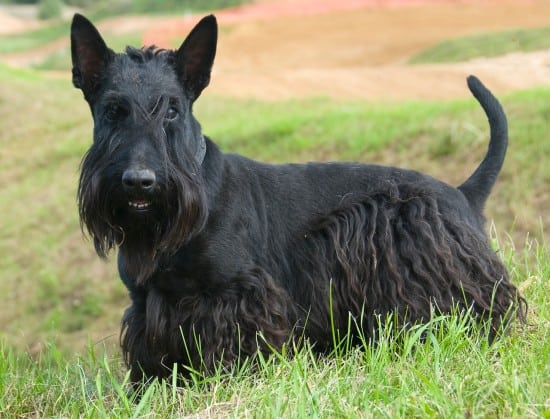
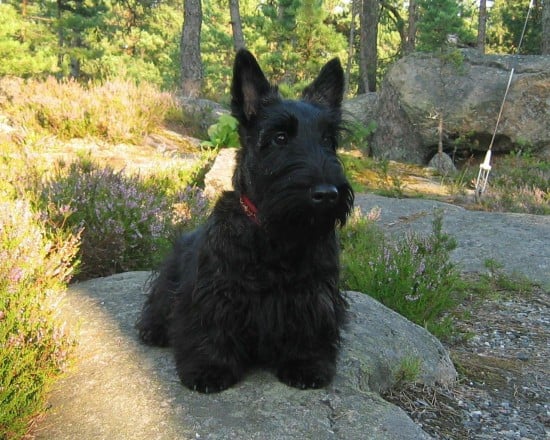
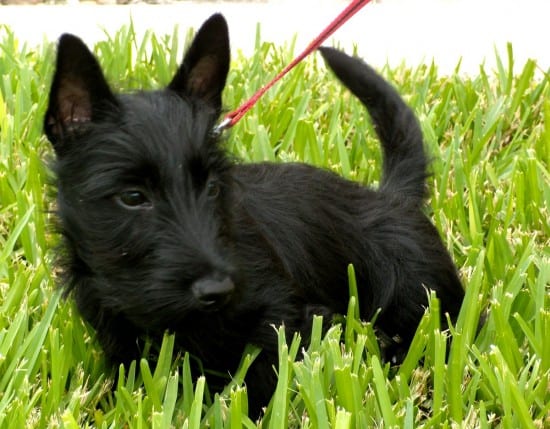
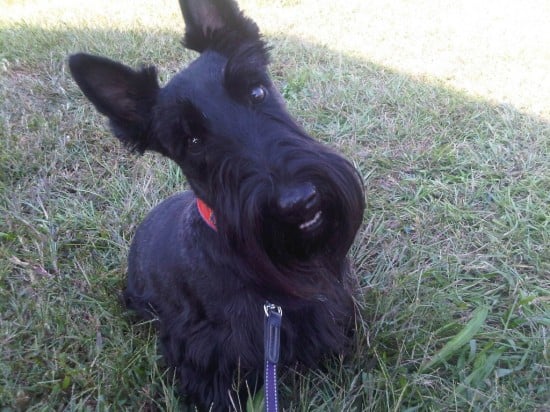
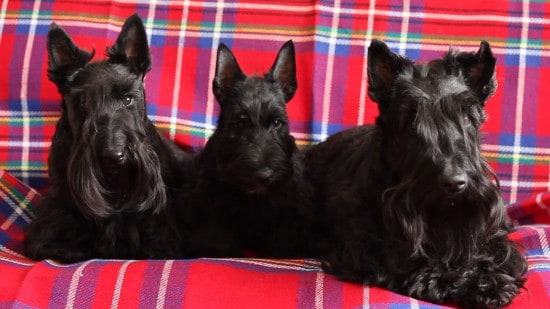
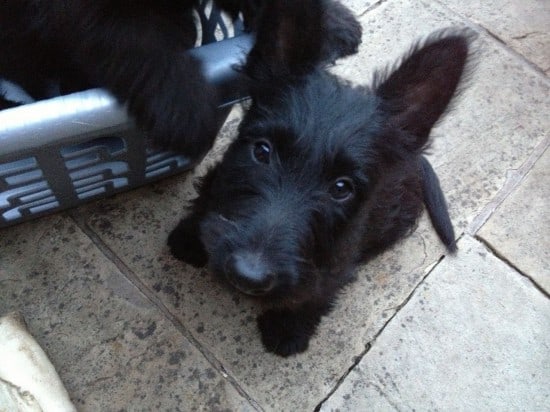
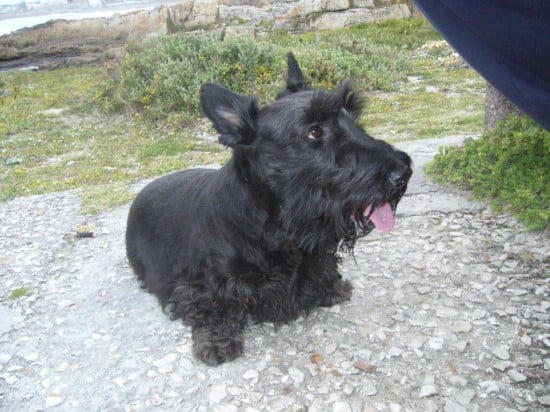
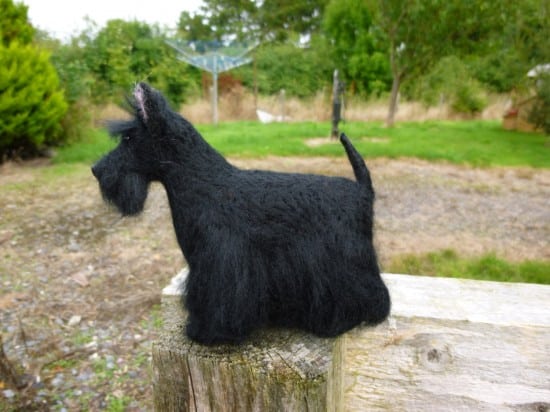
I am looking to adopt any advise .